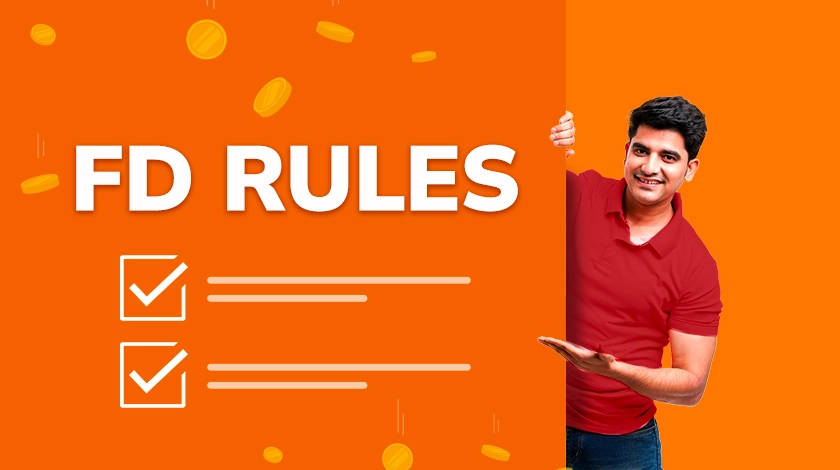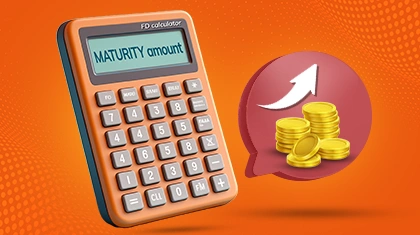THE
ORANGE
HUB
What is Cumulative and Non Cumulative Fixed Deposit

What is Cumulative and Non Cumulative Fixed Deposit
A Fixed Deposit (FD) is a safe and reliable investment option for anybody who is looking to earn steady returns with minimal risk. If you are looking to open an FD Account, you are bound to come across two primary options - Cumulative FDs and Non-cumulative FDs. Both of these deposits offer distinct features and benefits and it is essential for you to understand the differences.
It will help you in taking a more accurate and informed decision. In this comprehensive guide, we will compare and contrast the features of both to help you choose the most suitable option for your financial goals
What is Cumulative Fixed Deposit (FD)
Cumulative FDs are an excellent choice for investors who are looking for a long-term investment plan. In a Cumulative FD, the interest is compounded annually and reinvested along with the principal amount. The interest earned in each financial year is added to the initial investment, resulting in higher overall returns at maturity.
Benefits of Cumulative FDs:
Higher returns on maturity:
The compounding effect leads to increased returns on the Cumulative FD, making it an attractive option for long-term investors.
Ideal for long-term goals:
Cumulative FDs are well suited for individuals with long-term financial objectives such as retirement planning or buying a house.
Convenient and hassle-free:
Investors do not have to worry about periodic interest payouts as the interest is reinvested in the FD until maturity
What is Non-cumulative Fixed Deposit (FD)
Non-cumulative FDs are designed for investors who are seeking regular interest income at periodic intervals. The interest is paid to the investor on a monthly, quarterly, half-yearly or annual basis depending on the chosen frequency.Cumulative FDs are an excellent choice for investors who are looking for a long-term investment plan. In a Cumulative FD, the interest is compounded annually and reinvested along with the principal amount. The interest earned in each financial year is added to the initial investment, resulting in higher overall returns at maturity.
Benefits of Non-cumulative FDs:
Steady income stream:
Non-cumulative FDs provide a regular and predictable income stream to investors, making them suitable for individuals who rely on the fixed interest earnings to meet their financial needs.
Flexibility in payout options:
Investors can choose the frequency of interest payout based on their cash flow requirements, providing flexibility in managing the finances.
Choosing between a Cumulative FD and a Non-cumulative FD
Here’s how you can choose between Cumulative and Non-cumulative FDs:
Particulars |
Cumulative Fixed Deposit |
Non-cumulative Fixed Deposit |
Definition |
An FD where interest is earned and re-invested regularly but paid out with the FD amount at the end of the FD tenure |
An FD where interest is paid at regular intervals and the FD amount is paid out at the end of the FD tenure |
Interest Payout |
Only at maturity |
Monthly / quarterly / half-yearly / annually, as chosen |
Reinvestment of Interest |
Interest is reinvested to earn more |
No reinvestment, interest is paid out |
Returns |
Higher returns due to compounding |
Lower returns than cumulative FDs |
Suitable For |
Salaried individuals and long-term investors |
Retirees, homemakers and individuals who want a regular income |
Income Flow |
No income during the deposit period |
Regular flow of income throughout the FD tenure |
Here are the key things to consider before you make a choice:
- Financial Goals: Define your financial objectives clearly. A Cumulative FD might be more suitable if you are looking for long-term wealth accumulation and can forego periodic interest payouts. On the other hand, if you require regular income for monthly expenses or specific financial goals, a Non-cumulative FD would be a better choice.
- Liquidity Needs: Assess your liquidity needs and emergency fund requirements. A Cumulative FD locks your funds until maturity while a Non-cumulative FD allows you to receive regular interest payouts. If you anticipate the need for funds in the short term, a Non-cumulative FD provides more flexibility in accessing the interest earnings.
- Tax implications: Evaluate the tax implications of both the options. In a Cumulative FD, the interest is reinvested and added to the principal amount, leading to a higher tax liability upon maturity. On the other hand, in a Non-cumulative FD, the interest is paid regularly and you have to pay tax on the interest income as per your tax slab each year.
- Penalty for premature withdrawal: Check the penalty or loss of interest applicable for premature withdrawal or closure. In some cases, choosing a shorter tenure for a Non-cumulative FD might be more beneficial instead of breaking a long-term Cumulative FD.By carefully considering these factors and conducting a comprehensive analysis, you can make an informed decision between Cumulative and Non-cumulative FDs to maximise your returns and achieve your financial objectives.
FAQs
1. When it comes to Fixed Deposits, how is non-cumulative interest credited?
In non-cumulative FDs, the interest is credited to the depositor's bank account at regular intervals e.g., monthly, quarterly, half-yearly or yearly, as per the chosen payout option. The principal (initial FD amount) remains intact, while the interest is paid out periodically, making it ideal for those seeking regular income.
2. For Fixed Deposits, how is cumulative interest credited?
In cumulative Fixed Deposits, the interest earned is not paid out during the tenure. Instead, it is compounded and added to the principal at regular intervals. The total amount, including principal and compounded interest, is credited only at maturity, offering higher returns over time.
3. Who should choose a non-cumulative FD over a cumulative FD?
Non-cumulative FDs are apt for investors who prefer a steady income stream, e.g., retirees, homemakers, freelancers, etc., since these FDs offer regular interest payouts.
For disclaimer, Click Here
Scroll to top



